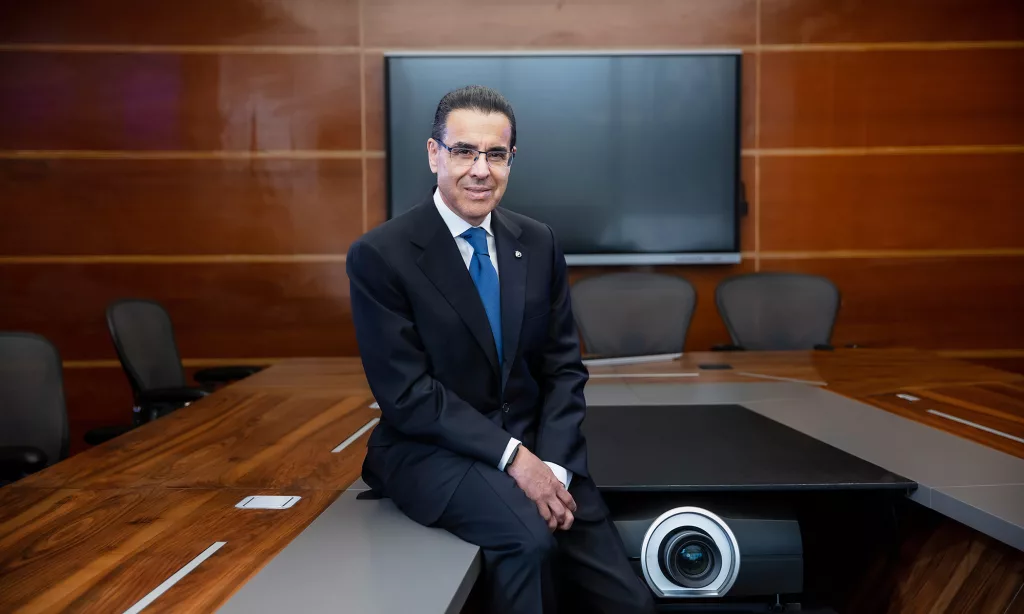Managing Popular Banking and Practising Financial Inclusion? Challenges Accepted!
Mexico’s Banco Azteca has risen to the top thanks to its inclusive policies — and astute direction from its chairman.
Alejandro Valenzuela’s understanding of the banking industry has substantially evolved over his nine years at the helm of Mexico’s Banco Azteca.

Chairman: Alejandro Valenzuela
“I am not exaggerating when I say that in this organisation, I have learned more than in my entire career in public and private financial institutions,” he admits. “Managing a popular bank has shown me little-known aspects of our Mexico, its people, and its culture — from a very close and privileged position.”
This in-depth understanding has led the chairman of the board to ensure that financial inclusion is an integral part of the business model. “We take financial inclusion beyond rhetoric,” Valenzuela says. “It’s something we’re convinced of and committed to: to serve our customer base, which is mostly comprised of the popular segment.
“We offer products and services that are easy to understand and tailored to meet all income levels, to bring inclusive prosperity to communities.”
Valenzuela’s academic background as an economist and his experience in public and private institutions have provided him with a comprehensive vision of the financial system. He served at Mexico’s Central Bank and at the Ministry of Finance and Public Credit, while in the private sector, he held various senior positions, including seven years as CEO of Grupo Financiero Banorte.
In February, Valenzuela assumed the chairmanship of the Banco Azteca board of directors. He had led the general directorate of the bank since joining in 2015. Banco Azteca belongs to Grupo Salinas — one of the largest business conglomerates in the country.
Over the years, Valenzuela has noted that when financial and banking services arrive in a community, growth is triggered. “Financial inclusion, complemented by financial education, becomes a catalyst for economic development,” he points out. “Hence our concern to generate greater coverage — to give more people the opportunity to join the financial system.”
It’s important that Banco Azteca has a physical presence to provide those services. Substantial human and material resources have been deployed to create the most extensive private banking network in Mexico. There are more than two thousand branches across hundreds of municipalities, many of them far from urban centres and economic hubs.
But Banco Azteca is not oblivious to modernisation or the evolution of banking services. “We’re a popular bank, but we’re not lagging in terms of digital and technological evolution.
“Being popular is not at odds with being modern — or with providing quality service. The adoption of new technologies has allowed us to incorporate more Mexicans into financial services.”
To gauge the evolution and relevance of its digital channel, the proof is in the numbers. “From 3.3 million customers who used our app in 2018,” he says, “by the second quarter of this year, that had risen to 24 million.” The number of transactions and operations increased in proportion.
This complementary service model has been dubbed “phygital” by Valenzuela: “Combining the best of physical infrastructure and the digital platform.”
For Alejandro Valenzuela, professionalism and constructive action form a fundamental part of the mission. “It’s significant to be reliable, to ‘know how to listen’ before ‘knowing how to speak’. Our aim is to leave a positive legacy in everything we do, and in every interaction.”
This management style has allowed him to consolidate Banco Azteca. The organisation owes much to the sensitivity and vision of Ricardo Salinas Pliego, founder and chairman of Grupo Salinas, says Valenzuela. “He entrusted me and the team to make the adaptations required for the bank’s maturity, providing it with more institutional management.”
Banco Azteca ranks ninth in the Mexican financial system by asset value, and has solid indicators. “We closed 2023 with the best results in our history in terms of capitalisation, liquidity, customer numbers, portfolio, profits, and service.”
Valenzuela finds the time to participate in various philanthropic causes, and shares his knowledge in various forums, and in academia. He has lectured at the Instituto Tecnológico Autónomo de México and the Centro de Estudios Monetarios Latinoamericanos.
With over two decades of experience in banking, Alejandro Valenzuela was perfectly equipped and qualified for the position of chairman of the board at Banco Azteca. “We observe continuity that few institutions have achieved,” he says. “For us, it’s gratifying to have fulfilled this corporate governance responsibility.”
You may have an interest in also reading…
CFI.co Meets Lavrynovych & Partners: Don’t Go to the Ukraine without Your Lawyer – The Protection of Business
Foreign colleagues often ask what kind of corporate law services are currently being sought most by clients in the Ukraine.
Otaviano Canuto: Politics and Climate Change Make Awkward Bedfellows in the Race to Tackle a Truly Fearsome Foe
The earth’s average surface temperature this May was higher than any other May on record… what can, and should, governments
Evan Harvey, Nasdaq: Stock Exchanges, European Capital Markets, and Sustainability
Sustainability is already part of the global market ecosystem. Exchanges and regulators have embraced it, researchers and academics have validated


















































































